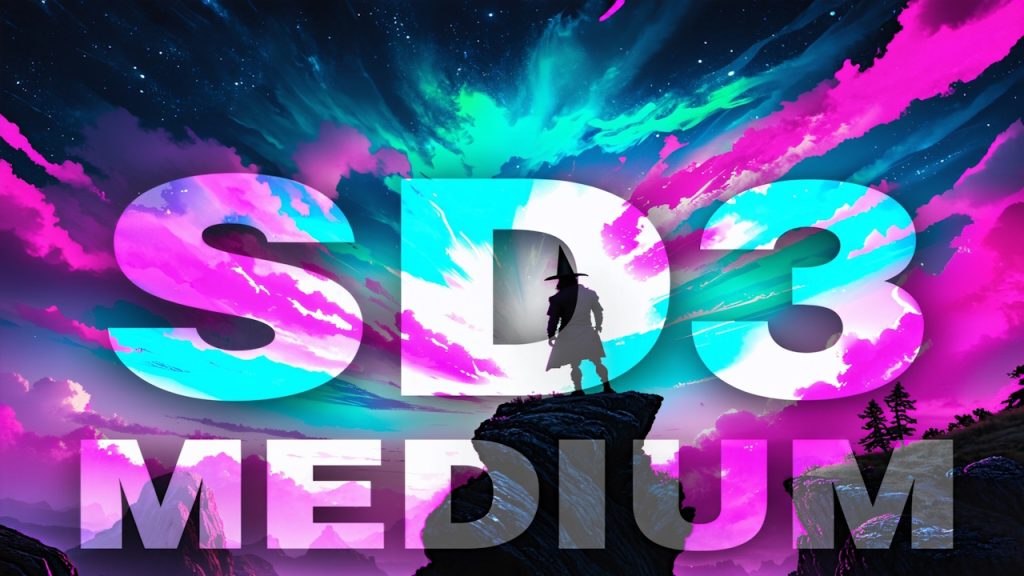Stability AI and AMD have launched a new version of the Stable Diffusion 3 Medium image generator, specifically built to run locally on laptops. Announced this week, the model is optimized for PCs with AMD’s new Ryzen AI 300-series chips and XDNA 2 neural processing units (NPUs).
This collaboration allows users to create high-quality images directly on their device without needing an internet connection. The release marks the first use of a special Block FP16 format on an NPU, a design that balances image quality with fast, on-device performance. The tool is available now through the Amuse 3.1 software.
The move signals a significant push towards powerful, on-device generative AI, moving complex tasks from the cloud to the user’s machine. This approach enhances privacy and speed while reducing reliance on remote servers, a strategic shift in the AI landscape.
This partnership places AMD in direct competition with rivals like NVIDIA and Intel, both of whom are heavily investing in on-device AI. While NVIDIA leverages its dominant GPUs, AMD’s strategy hinges on its powerful XDNA 2 NPU, aiming to make specialized AI tasks more efficient on thin-and-light laptops.
A New Frontier for On-Device AI Image Generation
The new model interprets text prompts to create initial 1024×1024 images. A two-stage pipeline, powered entirely by the NPU, then automatically upscales these visuals to a 4MP (2048×2048) resolution. AMD asserts this output quality is suitable for professional design work and even print applications.
This technology democratizes high-end content creation. It enables designers and marketers to rapidly iterate on custom visuals and generate branded marketing assets without cloud-based subscription fees. The ability to work offline is a critical advantage for creators who need performance on the go.
Under the Hood: Block FP16 and XDNA 2 Optimization
The core innovation is the use of the Block FP16 data type, an industry first for NPUs. This format provides the accuracy of traditional 16-bit floating-point numbers while delivering performance closer to 8-bit integers, avoiding the quality loss from excessive quantization.
For the end-user, this technical advance translates to faster image generation without the muddy or artifact-prone results often seen with more aggressive compression techniques. It allows the model to capture fine details and complex textures, a crucial factor for professional-grade creative work.
The 50 TOPS requirement also establishes a clear performance benchmark for next-generation AI PCs. It suggests that future AI features and models will increasingly demand this level of dedicated neural processing power, moving beyond simple tasks like background blur to complex content creation.
This technical breakthrough is tailored for AMD’s XDNA 2 architecture. It allows the complex Stable Diffusion 3 model, a Multimodal Diffusion Transformer (MMDiT), to run efficiently on consumer hardware. The model consumes just 9GB of memory, making it viable on laptops with 24GB of RAM.
Hardware Requirements, Licensing, and How to Get Started
To run the model, a PC must have an AMD Ryzen AI 300-series processor with an XDNA 2 NPU capable of at least 50 TOPS of performance. A minimum of 24GB of system RAM is also a firm requirement. Users can download the Amuse 3.1 Beta software from Tensorstack to get started.
Within the Amuse application, users must select “HQ” mode and toggle the “XDNA 2 Stable Diffusion Offload” option to activate the NPU-optimized pipeline. This ensures the workload is correctly handled by the specialized AI hardware for maximum efficiency.
The model is governed by the Stability AI Community License. This permits free use for research, non-commercial projects, and for commercial entities with less than $1 million in annual revenue. Larger businesses must secure a separate Enterprise License from Stability AI.
Stability AI’s Strategic Push Amidst Industry Scrutiny
This launch is the latest in a series of strategic releases from Stability AI. The company has recently expanded into AI-driven video with Stable Virtual Camera and on-device audio with Stable Audio Open Small, signaling a clear focus on diversifying its portfolio of generative AI tools.
The release comes as Stability AI navigates a period of significant transition. Following a leadership shakeup that saw Prem Akkaraju appointed as CEO, the company has been focused on commercializing its technology and securing its financial footing after raising new funding.
The emphasis on on-device processing and a transparent licensing model is particularly timely. The AI industry faces growing legal challenges over copyright and data sourcing. Stability AI itself is navigating a high-profile lawsuit with Getty Images in the UK.
In that ongoing case, Getty has asserted that “[Stability AI] chose to ignore viable licensing options and long-standing legal protections in pursuit of their stand-alone commercial interests.” By developing tools that run on defined hardware and offering models with clear licensing tiers, Stability AI appears to be building a more sustainable and legally defensible path forward in a contentious market.

